What Are White Dwarfs?
What are white dwarfs?
Some curiosities about white dwarfs, a stellar corpse and the future of the sun.

Where a star ends up at the end of its life depends on the mass it was born with. Stars that have a lot of mass may end their lives as black holes or neutron stars.

A white dwarf is what stars like the Sun become after they have exhausted their nuclear fuel. Near the end of its nuclear burning stage, this type of star expels most of its outer material, creating a planetary nebula.

In 5.4 billion years from now, the Sun will enter what is known as the Red Giant phase of its evolution. This will begin once all hydrogen is exhausted in the core and the inert helium ash that has built up there becomes unstable and collapses under its own weight. This will cause the core to heat up and get denser, causing the Sun to grow in size.
It is calculated that the expanding Sun will grow large enough to encompass the orbit’s of Mercury, Venus, and maybe even Earth.

A typical white dwarf is about as massive as the Sun, yet only slightly bigger than the Earth. This makes white dwarfs one of the densest forms of matter, surpassed only by neutron stars and black holes.
The gravity on the surface of a white dwarf is 350,000 times that of gravity on Earth.

White dwarfs reach this incredible density because they are so collapsed that their electrons are smashed together, forming what is called “degenerate matter.” This means that a more massive white dwarf has a smaller radius than its less massive counterpart. Burning stars balance the inward push of gravity with the outward push from fusion, but in a white dwarf, electrons must squeeze tightly together to create that outward-pressing force. As such, having shed much of its mass during the red giant phase, no white dwarf can exceed 1.4 times the mass of the sun.

While many white dwarfs fade away into relative obscurity, eventually radiating away all of their energy and becoming a black dwarf, those that have companions may suffer a different fate.

If the white dwarf is part of a binary system, it may be able to pull material from its companion onto its surface. Increasing the mass can have some interesting results.
One possibility is that adding more mass to the white dwarf could cause it to collapse into a much denser neutron star.

A far more explosive result is the Type 1a supernova. As the white dwarf pulls material from a companion star, the temperature increases, eventually triggering a runaway reaction that detonates in a violent supernova that destroys the white dwarf. This process is known as a single-degenerate model of a Type 1a supernova.

If the companion is another white dwarf instead of an active star, the two stellar corpses merge together to kick off the fireworks. This process is known as a double-degenerate model of a Type 1a supernova.

At other times, the white dwarf may pull just enough material from its companion to briefly ignite in a nova, a far smaller explosion. Because the white dwarf remains intact, it can repeat the process several times when it reaches the critical point, briefly breathing life back into the dying star over and over again.
Image credit: www.aoi.com.au/ NASA/ ESA/ Hubble/ Wikimedia Commons/ Fsgregs/ quora.com/ quora.com/ NASA’s Goddard Space Flight Center/S. Wiessinger/ ESO/ ESO/ Chandra X-ray Observatory
Source: NASA/ NASA/ space.com
More Posts from Matthewjopdyke and Others

2020 February 19
UGC 12591: The Fastest Rotating Galaxy Known Image Credit: NASA, ESA, Hubble; Processing & Copyright: Leo Shatz
Explanation: Why does this galaxy spin so fast? To start, even identifying which type of galaxy UGC 12591 is difficult – featured on the lower left, it has dark dust lanes like a spiral galaxy but a large diffuse bulge of stars like a lenticular. Surprisingly observations show that UGC 12591 spins at about 480 km/sec, almost twice as fast as our Milky Way, and the fastest rotation rate yet measured. The mass needed to hold together a galaxy spinning this fast is several times the mass of our Milky Way Galaxy. Progenitor scenarios for UGC 12591 include slow growth by accreting ambient matter, or rapid growth through a recent galaxy collision or collisions – future observations may tell. The light we see today from UGC 12591 left about 400 million years ago, when trees were first developing on Earth.
∞ Source: apod.nasa.gov/apod/ap200219.html
This Amazon/Author Hardcover Giveaway of A Cosmic Legacy: From Earth to the Stars is a compilation of all my publications contained within one text and part of a continuing story. Race to win, or simply buy it, and make this grand literary opus the favorite item in your library, next to your reading corner, on your nightstand, or in your living room, as you settle and read while the days go by.
Enjoy the story of several heroes who do as much as they can to heal the Earth, provide healing to those suffering most, and help humanity get out and into the Cosmos!
The Library of Congress Control Number (LCCN) is 2019911854, and the International Standard Book Number (ISBN) is 978-1-7333131-2-4, which is available on Amazon, Barnes & Noble and other stores online. Conduct a keyword search for the author, Matthew J Opdyke.
Hashtags #SpaceOpera #ScienceFiction #SciFi #Fantasy #Cerebral #Sophisticated #Books #eBooks #MatthewJOpdyke #mjopublications #physics #astronomy #biotech #neurotech #nanotech #spaceexploration #wellbeing #EarthFirst #physiology #neurology #longevity #CRISPR #sociopoliticalscifi #forEveryone

Solar System: Things to Know the August Eclipse
We’re counting down until the August 21 total solar eclipse that will be visible across most of North America. Here are some things you can do to prepare.

1. Find A Spot
The eclipse should be visible to some extent across the continental U.S. Here’s map of its path.
Our eclipse page can help you find the best viewing locations by longitude and latitude: eclipse.gsfc.nasa.gov/SEgoogle/SEgoogle2001/SE2017Aug21Tgoogle.html
2. Citizen Science
Want to know more about citizen science projects? Find a list of citizen science projects for the eclipse: https://eclipse.aas.org/resources/citizen-science

3. Never look directly at the sun! Even during the early phases of the eclipse!
Get your eclipse viewing safety glasses beforehand: eclipse2017.nasa.gov/safety

4. Get Our Interactive Eclipse Module App
In this interactive, 3D simulation of the total eclipse on August 21, 2017, you can see a view of the eclipse from anywhere on the planet:
http://eyes.jpl.nasa.gov/eyes-on-eclipse.html
5. Got questions?
Join the conversation on social media. Tag your posts: #Eclipse2017.
Twitter: @NASASolarSystem, @NASA, @NASASunEarth Facebook: NASA Solar System
Discover the full list of 10 things to know about our solar system this week HERE.
Follow us on Tumblr for your regular dose of space: http://nasa.tumblr.com

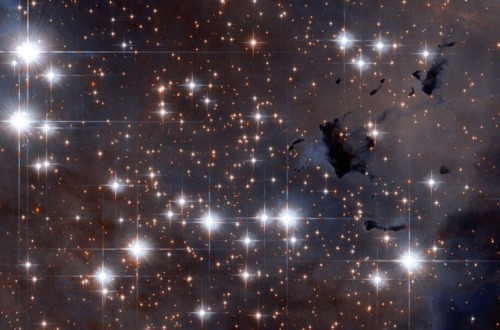

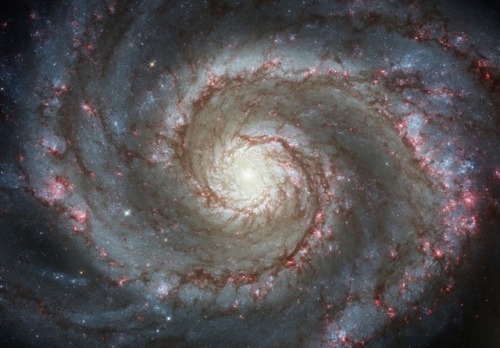



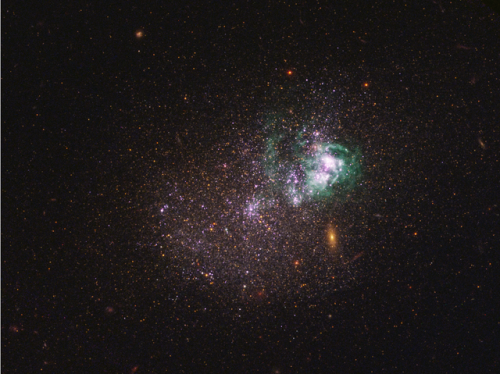
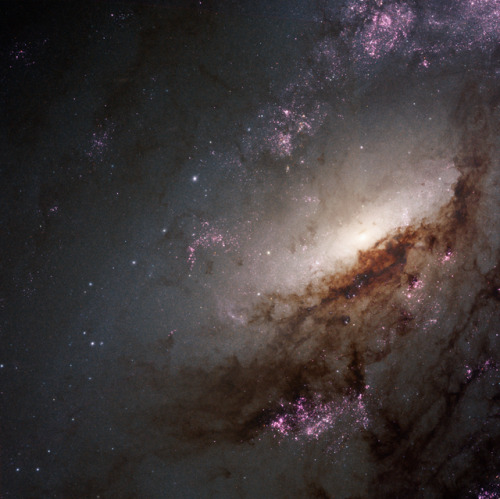
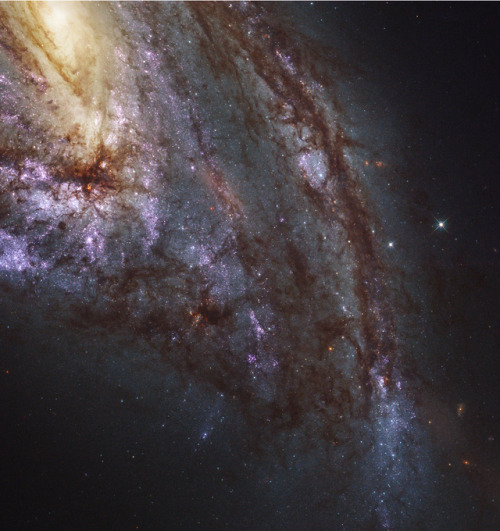
Hubble Catches New Stars, Individually, Forming In Galaxies Beyond The Milky Way
“There are a massive variety of star-forming regions nearby, and Hubble’s new Legacy ExtraGalactic UV Survey (LEGUS) is now the sharpest, most comprehensive one ever. By imaging 50 nearby, star-forming spiral and dwarf galaxies, astronomers can see how the galactic environment affects star-formation.”
Within galaxies, new stars are going to be formed from the existing population of gas. But how that gas collapses and forms stars, as well as the types, numbers, and locations of the stars that will arise, is highly dependent on the galactic environment into which they are born. Dwarf galaxies, for example, tend to form stars when a nearby gravitational interaction triggers them. These bursts occur periodically, leading to multiple populations of stars of different ages. Spirals, on the other hand, form their new stars mostly along the lines traced by their arms, where the dust and gas is densest. Thanks to the Hubble Space Telescope, we’re capable of finding these stars and resolving them individually, using a combination of optical and ultraviolet data.
The best part? These are individually resolved stars from well outside our own galaxy: in 50 independent ones. Here’s what Hubble’s new LEGUS survey is revealing.

Enjoy this First-Year-Anniversary compilation of all of my works in one title: A Cosmic Legacy: From Earth to the Stars This title includes the following works wrapped up into one story: Further Than Before: Pathway to the Stars, Part 1 Further Than Before: Pathway to the Stars, Part 2 Pathway to the Stars: Part 1, Vesha Celeste Pathway to the Stars: Part 2, Eliza Williams Pathway to the Stars: Part 3, James Cooper Pathway to the Stars: Part 4, Universal Party Pathway to the Stars: Part 5, Amber Blythe Pathway to the Stars: Part 6, Erin Carter "Our beautiful mother world ached for a reprieve from the injustices of many, courtesy of cultures and governance systems, that forgot how to love, how to be kind, how to include others, and how to think beyond the scope of greed and power, but within the visions of shared joy and well-being." Together with the organization Eliza Williams founded, called Pathway, she and her growing team will take us on a fantastical and Utopian journey to get us out and into the farthest reaches of space. There are dilemmas such as the physiological effects of space on each of us, as well as the need for longevity and a desire to still be able to visit loved ones following long journeys. Eliza and her team develop capabilities, so we can overcome the challenges ahead and are determined to stabilize a rocky economy, wipe away suffering, violence, disease, cartels, terrorism, and trafficking in persons. They work together to tame seismic activity, weather, and fires. She and her friends tackle ways to prevent extinction and provide solutions to quality of life concerns. They even consider the longevity of our Sun and our Earth's capacity to preserve life. Eliza tackles each of these issues to get us out, and into the stars, so we can begin our biggest quest--to help our Universe breathe ever so lightly. #amazing #science #fiction #novels #best #new #books #scifi #online #read #longevity #CRISPR #physiology #neurology #physics #theoretical #philosphical #politcal #educational #STEM #AmazonAuthor #BarnesAndNobleAuthor #wellbeing #quality #biotech #nanotech #SpaceOpera #astronomy #selfpublished https://www.instagram.com/p/B2GkDbYBs0y/?igshid=ufavr7j6lsy1

Challenge and tragedy comes to everyone, it does not discriminate between good or bad... Our resolve to overcome these challenges and tragedies while maintaining our kindness and compassion, our dignity and grace, our vision to see a broader perspective and our strength of character to persevere are how we should measure ourselves... Only judge others based on the level of kindness they demonstrate, no matter what life brings, but be kind and love no matter the burden or reward... - 💜 -- Matt Opdyke
Happy Holidays! https://www.instagram.com/p/BroSlILgeTY/?utm_source=ig_tumblr_share&igshid=l5400fyporq0



A new Chandra image shows the location of several elements produced by the explosion of a massive star.
Cassiopeia A is a well-known supernova remnant located about 11,000 light years from Earth.
Supernova remnants and the elements they produce are very hot — millions of degrees — and glow strongly in X-ray light.
Chandra’s sharp X-ray vision allows scientists to determine both the amount and location of these crucial elements objects like Cas A produce.
Where do most of the elements essential for life on Earth come from? The answer: inside the furnaces of stars and the explosions that mark the end of some stars’ lives.Astronomers have long studied exploded stars and their remains — known as “supernova remnants” — to better understand exactly how stars produce and then disseminate many of the elements observed on Earth, and in the cosmos at large.Due to its unique evolutionary status, Cassiopeia A (Cas A) is one of the most intensely studied of these supernova remnants. A new image from NASA’s Chandra X-ray Observatory shows the location of different elements in the remains of the explosion: silicon (red), sulfur (yellow), calcium (green) and iron (purple). Each of these elements produces X-rays within narrow energy ranges, allowing maps of their location to be created. The blast wave from the explosion is seen as the blue outer ring.
X-ray telescopes such as Chandra are important to study supernova remnants and the elements they produce because these events generate extremely high temperatures — millions of degrees — even thousands of years after the explosion. This means that many supernova remnants, including Cas A, glow most strongly at X-ray wavelengths that are undetectable with other types of telescopes.Chandra’s sharp X-ray vision allows astronomers to gather detailed information about the elements that objects like Cas A produce. For example, they are not only able to identify many of the elements that are present, but how much of each are being expelled into interstellar space.
Much more reading/info/video: http://chandra.harvard.edu/photo/2017/casa_life/

To all women, who dedicate hours on end toward helping others with little thought of reward in return -- you are a blessing in the lives of all you meet. For that, I wish you a Happy Mother's day! https://www.instagram.com/p/CAArmv5A7C8/?igshid=1v92oi99tgo35










Hubble’s Greatest Discoveries Weren’t Planned; They Were Surprises
“And if we head out beyond our own galaxy, that’s where Hubble truly shines, having taught us more about the Universe than we ever imagined was out there. One of the greatest, most ambitious projects ever undertaken came in the mid-1990s, when astronomers in charge of Hubble redefined staring into the unknown. It was possibly the bravest thing ever done with the Hubble Space Telescope: to find a patch of sky with absolutely nothing in it — no bright stars, no nebulae, and no known galaxies — and observe it. Not just for a few minutes, or an hour, or even for a day. But orbit-after-orbit, for a huge amount of time, staring off into the nothingness of empty space, recording image after image of pure darkness.
What came back was amazing. Beyond what we could see, there were thousands upon thousand of galaxies out there in the abyss of space, in a tiny region of sky.”
28 years ago today, the Hubble Space Telescope was deployed. Since that time, it’s changed our view of the Solar System, the stars, nebulae, galaxies, and the entire Universe. But here’s the kicker: almost all of what it discovered wasn’t what it was designed to look for. We were able to learn so much from Hubble because it broke through the next frontier, looking at the Universe in a way we’ve never looked at it before. Astronomers and astrophysicists found clever ways to exploit its capabilities, and the observatory itself was overbuilt to the point where, 28 years later, it’s still one of the most sought-after telescopes as far as observing time goes.
Hubble’s greatest discoveries weren’t planned, but the planning we did enabled them to become real. Here are some great reasons to celebrate its anniversary.
-
 thefarthestpointfromthesun reblogged this · 5 days ago
thefarthestpointfromthesun reblogged this · 5 days ago -
 hotairballoongal reblogged this · 3 weeks ago
hotairballoongal reblogged this · 3 weeks ago -
 totallyasexual reblogged this · 1 month ago
totallyasexual reblogged this · 1 month ago -
 totallyasexual liked this · 1 month ago
totallyasexual liked this · 1 month ago -
 g-martin liked this · 1 month ago
g-martin liked this · 1 month ago -
 tachvintlogic reblogged this · 1 month ago
tachvintlogic reblogged this · 1 month ago -
 silvereyedowl reblogged this · 1 month ago
silvereyedowl reblogged this · 1 month ago -
 helloevad liked this · 1 month ago
helloevad liked this · 1 month ago -
 baileybobbailey liked this · 2 months ago
baileybobbailey liked this · 2 months ago -
 peachmuffinsquish reblogged this · 2 months ago
peachmuffinsquish reblogged this · 2 months ago -
 cowskier99 liked this · 2 months ago
cowskier99 liked this · 2 months ago -
 aeyriabird reblogged this · 2 months ago
aeyriabird reblogged this · 2 months ago -
 alittlebitofsillinessreally liked this · 2 months ago
alittlebitofsillinessreally liked this · 2 months ago -
 silvergrain-in-the-dark liked this · 2 months ago
silvergrain-in-the-dark liked this · 2 months ago -
 manessha545 liked this · 2 months ago
manessha545 liked this · 2 months ago -
 viniciusleal2121 reblogged this · 2 months ago
viniciusleal2121 reblogged this · 2 months ago -
 viniciusleal2121 liked this · 2 months ago
viniciusleal2121 liked this · 2 months ago -
 ubermensch2019 reblogged this · 2 months ago
ubermensch2019 reblogged this · 2 months ago -
 foreskin-restorer liked this · 2 months ago
foreskin-restorer liked this · 2 months ago -
 plac-grocka reblogged this · 2 months ago
plac-grocka reblogged this · 2 months ago -
 imthelostwanderer liked this · 2 months ago
imthelostwanderer liked this · 2 months ago -
 derrell1919 reblogged this · 2 months ago
derrell1919 reblogged this · 2 months ago -
 mikeepoo reblogged this · 2 months ago
mikeepoo reblogged this · 2 months ago -
 scooby-doo-exploration reblogged this · 2 months ago
scooby-doo-exploration reblogged this · 2 months ago -
 scooby-doo-exploration liked this · 2 months ago
scooby-doo-exploration liked this · 2 months ago -
 cousinbat reblogged this · 2 months ago
cousinbat reblogged this · 2 months ago -
 di-devil liked this · 2 months ago
di-devil liked this · 2 months ago -
 honestlyangrypeace liked this · 2 months ago
honestlyangrypeace liked this · 2 months ago -
 chinawalls liked this · 2 months ago
chinawalls liked this · 2 months ago -
 mark9999 liked this · 2 months ago
mark9999 liked this · 2 months ago -
 myfeminineheart liked this · 2 months ago
myfeminineheart liked this · 2 months ago -
 mark-lewis1 liked this · 2 months ago
mark-lewis1 liked this · 2 months ago -
 b1acklavender reblogged this · 2 months ago
b1acklavender reblogged this · 2 months ago -
 geekballin reblogged this · 2 months ago
geekballin reblogged this · 2 months ago -
 geekballin liked this · 2 months ago
geekballin liked this · 2 months ago -
 freinhardt56 liked this · 2 months ago
freinhardt56 liked this · 2 months ago -
 europeposts liked this · 2 months ago
europeposts liked this · 2 months ago -
 sharkynwood liked this · 2 months ago
sharkynwood liked this · 2 months ago -
 bellark liked this · 2 months ago
bellark liked this · 2 months ago -
 talvez-o-ultimo-dia liked this · 2 months ago
talvez-o-ultimo-dia liked this · 2 months ago -
 fastcash978 liked this · 2 months ago
fastcash978 liked this · 2 months ago -
 wayno08 liked this · 2 months ago
wayno08 liked this · 2 months ago -
 the-loststone liked this · 2 months ago
the-loststone liked this · 2 months ago -
 karmalizedpixie liked this · 2 months ago
karmalizedpixie liked this · 2 months ago -
 we-dersuuzala-things liked this · 2 months ago
we-dersuuzala-things liked this · 2 months ago -
 direwerewolf liked this · 2 months ago
direwerewolf liked this · 2 months ago -
 jsdora liked this · 2 months ago
jsdora liked this · 2 months ago -
 detective-paranormal reblogged this · 2 months ago
detective-paranormal reblogged this · 2 months ago
